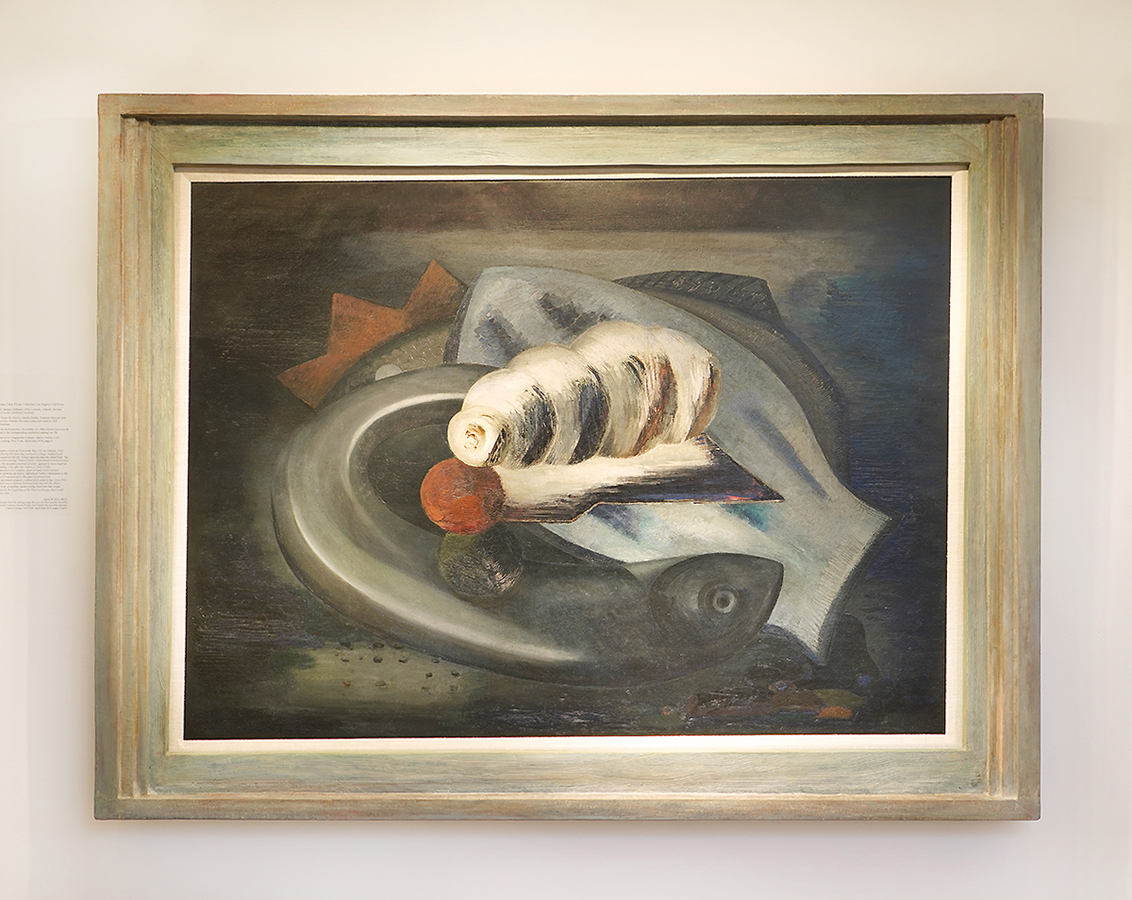| |
 |
Amelia Peláez
Grey Fish
(Pescados Grises), 1931
oil on canvas
38 x 51 inches
Provenance: Luis Amado Blanco Collection, Havana, Cuba;
Private Collection, Los Angeles, California.
Exhibited in Amelia Peláez del Casal, January-February 1935, Lyceum, Vedado, Havana, Cuba, and listed no. 19 (Pescado Gris) in the exhibition brochure.
Exhibited in Exposición de Pintura, Víctor M. García, Amelia Peláez, Domingo Ravenet and Carlos Enríquez, August 8, 1936, Lyceum, Vedado, Havana, Cuba, and listed no. XII (Pescados Grises) in the exhibition brochure.
Exhibited in Amelia Peláez, Exposición Retrospectiva, November 14, 1968, Museo Nacional de Bellas Artes, Havana, Cuba, and listed in the corresponding exhibition catalog, no. 58.
Illustrated in Diálogos Constructivistas en la Vanguardia Cubana: Amelia Peláez, Loló Soldevilla and Zilia Sánchez, Galerie Lelong, New York, April-June 2016, page 6.
Illustrated in Important Cuban Artworks Volume Fourteen, Cernuda Arte, Coral Gables, Florida, 2016, page 22.
[Amelia] “Peláez studied with [Alexandra] Exter in Paris from May 1931 to January 1934, shortly before her
return to Havana. During this time they worked in collage, studied book illustration, created set designs, and
explored still life. Peláez reported that she owed Exter ‘her greatest advancement and technical understanding.’
Indeed Exter’s experimental interpretation of Cubism and Futurism, animated by the dynamic potential of color,
appears to have inspired Peláez’s approach to a lifetime of painting, even after her return to Cuba [1934]…
Exter’s strategy of centering the composition on a weighty object around which swirled ‘whirlwinds of geometric
forms,’ often spinning off planes, influenced Tatlin’s Monument to the Third International (1919-1920), a work
foundational to Russian Constructivism.
Peláez also adopts Exter’s interest in movement around a central pivot point in her circa 1931-35 Pescados Grises
(Grey Fish). In their case a stylized, flattened fish and still life object become the focal point for the curved body
of another, nearly-living black fish that wraps around them. This subtle movement may be the beginning of the
black arabesque that would become the hallmark of Peláez’s mature style…”
Ingrid W. Elliot, Ph.D., excerpt from the catalog essay
Between the Real and the Invisible,
Diálogos Constructivistas en la Vanguardia Cubana: Amelia Peláez,
Loló Soldevilla and Zilia Sánchez,
Galerie Lelong, New York, April-June 2016, pages 5 and 6.
|
|
|
| |
| |
| |
| Copyright 2002-2024, Cernuda Arte. All Rights Reserved |
| |
|
| |
